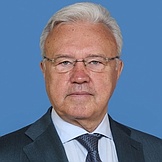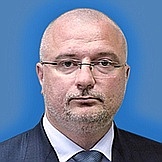Regional flags and emblems


PROFILE
Established 7 December 1934
On 1 January 2007, the Taymyr (Dolgan-Nenets) and Evenk autonomous areas were included in the Krasnoyarsk Territory
Capital Krasnoyarsk
The Krasnoyarsk Territory is part of the Siberian Federal District
Area 2,366,800 sq km
Population 2 837 400 (2025)
Ethnic groups
(2020 National Census, %)
Russian – 93,64
Other – 6,36
Administrative divisions (2024)
Municipal districts – 41
Municipalities – 3
City districts – 17
Rural towns – 26
Rural districts – 457
Geography and climate
The Krasnoyarsk Territory is located in Central and Eastern Siberia in the Yenisei River basin. In its central part the region stretches for about 3,000 km from north to south. It extends for about 1,250 km from east to west in the north, and about 650 km along the Trans-Siberian Railway. The terrain along the left bank of the Yenisei is a lowland plain. To the east of the Yenisei are the Tunguska Ridge and the Yenisei Plateau rising up to 1,104 m. In the south of the region are the 3,000 m high Eastern Sayan Mountains.
The Krasnoyarsk Territory borders on the Republic of Sakha (Yakutia), the Republic of Tyva, the Republic of Khakassia, the Kemerovo, Tomsk, and Irkutsk regions, the Khanty-Mansi and the Yamalo-Nenets autonomous areas. In the north it has coastlines on the Kara and Laptev seas. The major rivers are the Yenisei, Angara, Chulym, Pyasina, Khatanga, Niszhnyaya Tunguska, Podkamennaya Tunguska, Kotuy, Vilyuy, Sikasyan, and Vivi. The largest lakes are Taymyr, Pyasino, Lama, and Khatayskoye.
January temperatures average –24.1°C, July temperatures average +12.9°C. The northern part of the region is covered by permafrost.
The region is home to the following state nature reserves: Tunguska, Putoransky, Bolshoi Arktichesky, Taymyrsky Biosphere Reserve, Sayano-Shushensky Biosphere Reserve and Tsentralno-Sibirsky Biosphere Reserve. Federally designated nature reserves include Purinsky, Yeloguysky (complex), Severozemelsky, Shushensky Bor National Park, Stolby National Park and Yergaki Nature Park.
Government
The legislative branch is represented by the Regional Legislative Assembly, which is the permanent, representative and only body of legislative authority in the territory.
The Legislative Assembly is elected for five years and consists of 52 deputies, of whom 22 are elected in single-member constituencies across the Krasnoyarsk Territory with the exception of the Taimyr, Dolgano-Nenets and Evenk administrative areas, which have special status. Four deputies are elected in double-member constituencies in the administrative areas with special status. The remaining 26 deputies are elected in the single electoral district across the Krasnoyarsk Territory in proportion to the number of votes cast for lists of candidates nominated by electoral associations. The current Legislative Assembly was elected in September 2021; its term expires in September 2026.
The executive branch is represented by the Government of the Krasnoyarsk Territory, the permanent supreme body of executive authority of general competence in the region and other bodies of executive authority of the Krasnoyarsk Territory.
The Governor of the Krasnoyarsk Territory is the region’s highest-ranking officiall, who runs the executive branch of the Krasnoyarsk Territory and forms the Government of the territory. He is elected for five years by Russian citizens who permanently reside in the region. The term of the incumbent Governor expires in September 2028.
Economy and natural resources
The Krasnoyarsk Territory is one of the most industrially developed regions of Russia. The region is generously endowed with natural resources, enabling it to develop a wide range of industries, including hydroelectric power and solid-fuel power engineering, non-ferrous metallurgy, mining, and forestry.
The region produces over 80% of Russia's nickel (about 20% of world output), more than 70% of copper, about 30% of primary aluminum, and almost 98% of platinum group metals. It accounts for about 18% of Russia’s gold production, 2.5% of oil production, and 0.3% of natural gas production.
For many years the Krasnoyarsk Territory has been among the top ten Russian regions in regional GDP. Manufacturing accounts over 60% of regional GDP, while the share of agriculture is about 2,4%.
Major industries include ferrous and non-ferrous metallurgy, the fuel and energy sector, machine manufacturing and metal processing, mining, timber industry, wood products, chemicals, agriculture, and food processing. The main industrial centres are Krasnoyarsk, Norilsk, Nazarovo, Sharypovo, Kansk, and Zheleznogorsk.
The region produces over 30 heavy, light, alloying and rare-earth metals and elements, the most important of which are aluminum, nickel, cobalt, copper, platinum, and gold. Among the largest producers are the Krasnoyarsk Aluminum Plant, the Krasnoyarsk Metallurgical Plant, the Boguchansk Aluminum Plant, the Gorevsky Polymetallic Mining and Processing Plant, and RUSAL Achinsk Alumina Combine.
Norilsk Nickel, the world’s northernmost mining and smelting company is the region’s and Russia’s flagship non-ferrous metal producer, accounting for one-sixth of the region's industrial output. The region produces super purity metals such as tellurium, germanium, silicon, and ultrapure aluminum for radioelectronics.
There is also industrial production of gold, lead, zinc, magnesite, and other minerals. The extraction of raw materials for the production of non-ferrous metals accounts for almost 90% of the industry’s output. It is followed by coal mining, which averages over 50 million tonnes per year. The major coal deposits are the Kansko-Achinsky, the Nazarovo, the Berezovskoye, and the Irsha-Borodinskoye deposits.
The region’s chemical sector consists of chemical, petrochemical, microbiological and medical companies. The industry leaders are the Mining and Chemistry Combine and the Achinsk Oil Refinery. Regional companies produce high-quality artificial rubbers.
Forests in the Krasnoyarsk Territory make up over 45% of all forests in Siberia. Over 55 million cubic metres of timber are harvested in the region every year. The region is the third largest producer of timber in Russia and the leading producer of lumber in the country.
The Krasnoyarsk Territory is the largest agricultural region in Central and Eastern Siberia. It fully meets the population's needs in basic foodstuffs. Farmland of all kinds totals about 3,850 ha, while the size of arable land is about 2,573 ha. The main agricultural spheres are grain production, potato and vegetable crops, meat and dairy livestock farming, sheep breeding, poultry farming, apiculture, and fur farming. Due to the region’s harsh climatic conditions, agriculture is mostly developed in the southern areas. The Minusinsk Hollow is known as the breadbasket of Eastern Siberia and the producer of the best vegetables and fruits in Siberia, in particular, the delicious Minusinsk tomatoes. Some farmers even grow grapes here.
The food industry consists mainly of processing local agricultural produce (butter factories, condensed and dry milk plants, meat processing plants, flour mills, pasta factories, distilleries, breweries, etc.), and is mainly concentrated in the cities of the region’s central and southern areas.
The availability of a rich resource base in the region (hydro resources, brown coal deposits) is conducive to power generating. There are 20 power plants, of which the largest are the Krasnoyarsk Hydro Power Plant, the Krasnoyarsk Thermal Power Plant GRES-2, The Nazarovskaya Thermal Power Plant, and the Boguchanskaya Hydro Power Plant.
The transport sector is represented by all modes of transport including air, motor, rail, river, and pipeline. The railway is the major form of transport accounting for about 94% of the freight transport revenue in the region. The Trans-Siberian and South-Siberian railways cross the region from west to east.
The Krasnoyarsk Territory is traditionally one of Russia’s major export-oriented regions. The main export products are non-ferrous metals (aluminum, nickel, copper), timber and lumber. The main consumers of these products are Japan, Italy, Egypt, and Turkey. Other exports include ferrous metals, oil and oil products, coal, nitrogen and potash fertilizers, synthetic rubber, mechanical and electrical equipment.
Culture and Tourism
Culture and arts are thriving in the Krasnoyarsk Territory. The region is home to nine professional and five municipal theatres, including opera and ballet, drama, musical comedy and young spectator’s theatres, various art galleries, 70 museums, an academic orchestra, and the famous Godenko Folk Dance Ensemble of Siberia.
Krasnoyarsk, Achinsk, Kansk and Minusinsk offer drama theatres and culture palaces offering various recreation activities, cinemas, libraries, music and art schools, and various public and private educational institutions. The cities along the Yenisei River are known for their unique architecture, cathedrals and churches.
The Russian Academy of Arts has a Siberian-Far Eastern branch in Krasnoyarsk in honour of the prominent artist Vasily Surikov, a Krasnoyarsk native. The oldest city in Eastern Siberia, Yeniseysk, is famous for its artist associations and is listed as an architectural heritage city.
The Krasnoyarsk Territory is peculiar for its cultural and ethnic diversity. It is home to Siberia’s indigenous peoples as well as to the representatives of almost all the former Soviet republics living in the region. The authorities strive to cultivate ethnic traditions and folk arts and create favourable conditions for their development in the region.
It became a good tradition to celebrate popular folk festivals in the region. These include the Russian Maslennitsa-Shrovetide, the Kheyro indigenous fishermen and reindeer herders festival, the Tatar and Bashkir Sabantuy, the Chuvash Akatuy, the Khakass Chyl Pazy, the Yakut Ysyakh, the Buryat Sagaalgan, the Tuva Shagaa, the Tajik Sayri Lola, the Moldovan Martsishor, the Finnish Juhannus, the Armenian Vardavar, the Nowruz festival celebrated by the peoples of Central Asia and Azerbaijan, the Days of Slavic Writing and Culture, the Jani-Ligo Day of the Baltic peoples, the Karelo-Finnish Kalevala, the German Spring Festival, the Chinese Lantern and New year festivals, the Ukrainian Shevchenko Days, the Inter sports festival, the Yeniseysky Meridian Cossack song festival and many other events.
The region has huge recreation potential that favours the development of all kinds of tourism, including reindeer and dog sled safaris, ecotourism, horse tourism, cross-country ski trips, health resort. The region is home to the well-known health resorts: Sosnovy Bor on Lake Tagarskoye, the Shushensky on the shores of the mountain river Oya, the Ozero Uchum, and the Krasnoyarskoye Zagorye in the foothills of the Western Sayan Mountains.
Some of the most popular tourist activities in the region are hunting and fishing, cultural tourism and shrine pilgrimage, business and event tourism. The latter includes the Krasnoyarsk International Music Festival of the Asia-Pacific Region, the Mir Sibiri International Festival of Ethnic Music and Crafts, the Krasnoyarsk International Museum Biennale, the Siberian Maslenitsa national festival of folk culture, the Yeniseyskaya Ukha fish festival, the Yenisei August Fair, as well as various exhibitions and forums. Alpine skiing is gaining in popularity.


